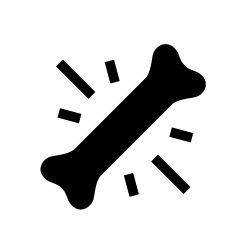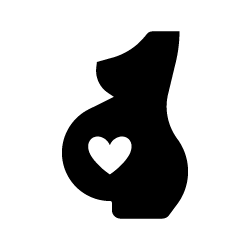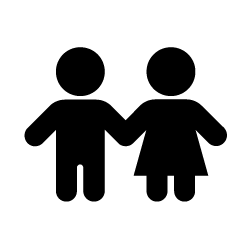What we do
If you’ve never had an osteopathy treatment before, then you’re in for a treat! Osteopathy is a manual medicine – meaning we use our hands to heal your aches and pains. Best known for our ‘whole body’ approach, Osteopaths are problem solvers that look to find the root cause of your pain.
Anna provides a multi-faceted approach which combines osteopathy with Western Medical Acupuncture (WMA), providing a truly holistic approach. Osteopathic techniques such as massage, joint articulation and joint clicking are used in conjunction with the remarkable effects that acupuncture can have on the central nervous system to relax and relieve pain. If you aren’t too keen on acupuncture, joint clicking or any other aspect of treatment, that is ok, there are other techniques that can be used as a substitute.

Headaches and Migraines
People may suffer from headaches for a variety of reasons, some of which Osteopathy and WMA can help with. These include musculoskeletal issues (tension headaches/postural issues), whiplash and concussions, and sinus issues. Additionally, if we feel that you possibly have headaches due to other reasons, such as vision issues or hormone imbalances, at Flesh and Bone we have a great referral network and can recommend an appropriate practitioner.
It is common for headaches to develop following a fall or injury – even if it didn’t directly involve the head. When you take a tumble on your skis or fall from your mountain bike, your body will naturally try to prevent your head from hitting the ground. This can result in a strained and painful neck and back. Left untreated, this will often manifest into regular “tension” headaches. If you are unlucky and do hit your head, you may sustain a concussion. In this case, it’s important to get checked out by your GP, and possibly be referred to a concussion clinic. Osteopathic/WMA treatment is a great reliever for the headaches, brain fog and neck pain that can come with a concussion.
Migraines are a bit trickier than headaches, due to the multitude of possible reasons causing them. Once triggers have been recognised, prevention largely lies in avoidance. These triggers can include chocolate, alcohol, medication, stress, exercise, and hormonal fluctuations. As well as helping you figure out your possible triggers, Osteopathic treatment can improve the muscle balance, posture, and circulation, reducing the frequency or intensity of migraines and improving your quality of life.

Neck and back pain
Many people will suffer from a sore, stiff neck or back in their life. Some are temporary and acute, caused by an injury or strain or even the classic “I just woke up with it” sleeping injury. Others are more serious and chronic, such as arthritis or stenosis. Neck and back pain can happen to anyone, from babies to the elderly.
It is important to have a thorough assessment to determine the cause of your pain. To do this, Osteopaths will take a detailed case history, run you through a movement screen and perform relevant orthopaedic tests. This helps to attain a diagnosis and provides information to direct the treatment. During the appointment you will be given practical, self-help advice to manage your injury and if need be, we can refer you for scans or to a specialist.

General aches and pains
There are such a number of issues that Osteopaths treat, it’s hard to name them all. Some common ones include:
Sciatic pain and disc issues
Arthritis
Tennis/golfers elbow
temporomandibular joint/jaw pain
Plantar Fasciitis
Carpal Tunnel Syndrome
Breathing issues
Hip, knee or ankle pain
Tendinopathies
Postural issues/pain
Work injuries
Digestive issues
Your pain might not fall under one of these categories, but that doesn’t mean you won’t benefit from osteopathy. If you have any questions, feel free to email Anna with your contact details and she will be in touch as soon as possible.
Maintenance treatments
For a lot of people, osteopathy is a crucial element to maintaining good health. Some may have a complex injury that requires regular top-up treatment to help them feel comfortable and mobile – how frequent this is depends on the person and circumstance. It may also be your job contributing to your pain. From physical jobs to those more sedentary, repeated positions or strains can lead to annoying and painful niggles. Seeing an Osteopath once a month, once a quarter or once a year might be all you need to be feeling your best.

Sports injuries
Osteopathy isn’t just backs and necks. We treat many different injuries, including shoulders, ankle and knee injuries, strained muscles, and ligament injuries - you name it. Osteopaths help you to recover more quickly and make sure there are no niggling issues that may flare up in the future.
A good example is a rotator cuff injury. It is important that the muscle recovers fully and effort is put in to ensure the muscle group is back to its original strength (or better yet, even stronger). The shoulder is a highly mobile joint and the rotator cuff plays a crucial role in stabilising particularly with overhead movements. If one of the 4 rotator cuff muscles isn’t doing its job, it can disrupt the function, balance, and strength of the shoulder. Osteopaths focus on all facets of the injury and ensure there are no ongoing affects.
Osteopathy can also help with long-term sports health and optimal physical performance by keeping on top of minor niggles during training and competition phases before they progress into larger issues. Furthermore, we can guide you in diaphragmatic breathing and work to improve the way your ribs move, allowing for greater ribcage expansion and optimal breathing technique.

Pregnancy and postpartum
Pregnancy is no small feat! The rapid growth that occurs during this time, for both mum and baby, can put a lot of strain on your body. Your posture changes to accommodate your growing body, with your lower back becoming more arched and your pelvis tilting forward. This can lead to lower back pain and tension in your upper back, neck, and shoulders.
As levels of the hormone relaxin increase in the body your ligaments relax, preparing the pelvis for the expansion required during birth. This ligament laxity can cause random aches and pains in all of your joints, but most commonly in your hips and pelvis. It is also helpful to have an aligned pelvis heading into labour, allowing ease of passage for baby and the reduction of any added discomfort for mum. Anna advocates self-management, providing tips, tricks and exercises that can help you through your pregnancy.
Pregnant women often get treatment for the following:
Lower back/hip pain
Pelvic girdle pain
Round ligament pain
Headaches
Reflux
Carpal tunnel syndrome
Anna also offers a bespoke induction treatment , which combines gentle Osteopathic techniques with Western Medical Acupuncture. These treatments are usually at the request of your midwife and only performed after your due date and if medical induction is planned. The treatment works to encourage the body to release hormones that soften the cervix and ready the body for labour, while relaxing mum and providing a headspace ready for the journey ahead. If you are wanting to book an induction treatment and can’t find any available appointments, please contact Anna directly.

Children
Kids in Wānaka are a little different, often found flying down the slopes, kicking up dirt in Sticky Forest or performing a double cork on a trampoline. Yes, they are bendy and resilient, but they are also made up of the same things as you and me. Children can get tight muscles, headaches, back pain and stiffness - especially after catching an edge on the wakeboard and performing a ‘scorpion’ or going over the handlebars of their bike.
The goal with osteopathic treatment for children is to remove tension and pain in the body that can build up after knocks and falls. Osteopathy helps to promote healthy body symmetry, nurturing rapidly growing bodies.
You may bring your child in for treatment for:
Overuse injuries such as Osgood-Schlatter or Sever’s disease
Sporting injuries
Muscular strain, tension and restrictions associated with asthma
Muscle strains and fatigue associated with growing pains
Minor strains and sprains resulting from injury
Headaches resulting from muscular tension
Anxiety and behavioural issues
The transition from childhood into adolescence is typically accompanied by growth spurts, a drastic shift in hormonal levels and significant musculoskeletal changes. If your child is complaining of aches, pains, cramps, headaches or just generally not feeling their best, an appointment with Anna might just be the ticket.
Is Osteopathy Safe for Children?
If your child has any significant health issues that you believe could be complicated through our treatment, we recommend you check with a health practitioner before booking. Treatment on children is very gentle. We use a pressure that is comfortable with your child and continue to check with them to ensure they are comfortable throughout.
